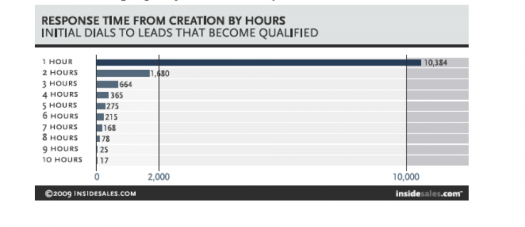 Applicant tracking systems are wonderful. They help you post a job to your own site and to many job boards, track submissions, and bring up those candidates again for new job searches. They also allow you to figure out who is where in the hiring pipeline, and keep things neat and organized. Some of them even intelligently pick the most relevant resumes that are submitted directly to the company or from third-party job boards such as Monster or CareerBuilder. However, when it comes to finding real talent that is a perfect match for the position, the ATS falls short compared to the good old-fashioned sourcing and recruiting process.
Applicant tracking systems are wonderful. They help you post a job to your own site and to many job boards, track submissions, and bring up those candidates again for new job searches. They also allow you to figure out who is where in the hiring pipeline, and keep things neat and organized. Some of them even intelligently pick the most relevant resumes that are submitted directly to the company or from third-party job boards such as Monster or CareerBuilder. However, when it comes to finding real talent that is a perfect match for the position, the ATS falls short compared to the good old-fashioned sourcing and recruiting process.
When filling a position using an internal ATS, it comes down to one of these two scenarios:
- Your perfect candidate (or set of candidates) responds directly from one of the job boards you used to get the word out, and your internal process and intelligent systems allow you to identify this perfect candidate from the myriad of other irrelevant submissions. If this is you, you are in luck! Not only do you run a very efficient shop, but you are operating at a level most of other readers of this dispatch can only aspire to. However, the majority of submissions you will get from eager candidates responding to job boards are not at all relevant to your search. If you have lots of potential candidates flowing through to current job openings, given the current state of affairs, chances are you will not be able to tell the wheat from the chaff until several days after you receive the submission.
- You do a search on your ATS and find a candidate who seems like a good fit. The subject submitted his CV for a different position a few weeks or months ago. You think to yourself, “I am sure he still looking; let me give him a call!” Unfortunately, if you come across a submission that is over a week old, you don’t have a candidate who was hand delivered from your ATS. What you do have is some cold outreach to do to make sure the candidate is still looking and/or interested in your job description.
Cold outreach, the most frequent method to finding skilled talent both relevant and looking, has being studied in far more detail and experienced far more advances in the realm of sales than in the practice of recruiting. The recruiting industry — especially in sourcing — lacks the process, structure, and rigor that pre-sales and lead generation enjoy in sales. Most tools are devoted to either finding people or tracking them once converted, leaving the most painful step, the cold outreach, out of the picture.
Reaching out cold to a set of candidates is not only one of the most time-consuming tasks, but it could have the largest impact on the cost of sourcing as well as the reputation of a recruiter among the candidate community. This is just math … most cold emails have between 3 percent and 5 percent conversion rates; in other words, people replying to you to say, “yeah, I am interested, let’s talk.” That means that whatever activity you do pre-email such as researching and composing has a 33 to 20 multiplier in cost!
Think about that for a minute. Performing outreach to a candidate cold and not locking in that candidate is probably the largest cost driver in terms of working on placement. Tracking outreach performance should be a business imperative, not a nice to have.
If recruiting is thought to be in the same realm as sales, an analogy made many times by contributors to this site, then a study done by Professor Oldroyd (self-servingly used by InsideSales for its dialer product), a faculty fellow at MIT, on response rates to web leads are applicable to recruiting. The study (see graphic above) shows that the ability to make contact and qualify an inbound inquiry diminishes by six times within the first hour. After 20 hours every additional dial or outreach to that inquiry actually hurts your ability to make contact. Extrapolating this study to recruiting means that trying to reach back out to any candidate who reached out to you over 10 hours ago may turn this outreach cold. Not only is this candidate no longer “yours,” but you are back to the inglorious economics of the cold outreach.
This data should make you think differently about applicant tracking systems. Your ATS, or any other aggregator of people’s profiles for that matter, from LinkedIn to Github to Dice, should be thought of as phone books with varying amounts of information. The cost of obtaining a contact should be added to the time spent doing additional research to really figure out if the target is a good fit for search, and that total immediately multiplied by 20 or 30 — depending on your emailing skills. These dynamics favor those recruiters with great communication skills and the ability to identify targets who will find what the recruiter has to offer compelling. These are similar traits as those enjoyed by great salespeople.